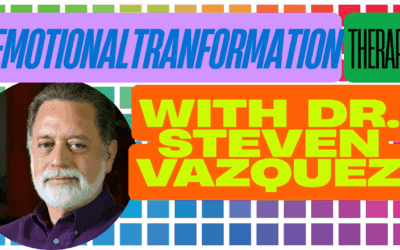What is Formative Psychology?
Formative Psychology is a comprehensive approach to understanding human development and behavior that was developed by Stanley Keleman. This innovative model emphasizes the role of the body in shaping our experiences, emotions, and personal growth. At its core, Formative Psychology views the human body as a dynamic, self-forming process that is continuously organizing and reorganizing itself in response to internal and external influences.
The term “formative” in Formative Psychology refers to the ongoing process of biological and psychological formation that occurs throughout an individual’s life. This approach posits that our physical structure, emotional patterns, and cognitive processes are all interconnected and constantly evolving. Keleman’s work focuses on how we can consciously participate in this formative process to influence our own development and well-being.
Formative Psychology integrates insights from biology, embryology, and psychology to offer a unique perspective on human experience. It emphasizes the importance of understanding the body’s inherent wisdom and its role in shaping our thoughts, feelings, and behaviors. This approach encourages individuals to develop a deeper awareness of their bodily experiences and to use this awareness as a tool for personal growth and transformation.
Who Started Formative Psychology and What Led to Its Development?
Stanley Keleman (1931-2018) was the founder and primary developer of Formative Psychology. Born in Brooklyn, New York, Keleman’s journey towards creating this innovative approach was shaped by a diverse range of experiences and influences.
Keleman’s early life was marked by a keen interest in the human body and its relationship to emotional and psychological experiences. As a young man, he studied bodybuilding and became fascinated by the ways in which physical exercise could influence not only the body’s shape but also one’s emotional state and sense of self.
In the 1950s, Keleman began his formal studies in the field of psychology. He was particularly drawn to the work of Wilhelm Reich, a psychoanalyst who emphasized the importance of the body in psychological processes. Keleman trained with several of Reich’s students, including Alexander Lowen, the founder of Bioenergetic Analysis.
However, Keleman’s approach began to diverge from traditional Reichian and neo-Reichian methods as he developed his own unique insights into the relationship between bodily processes and psychological experiences. He was particularly influenced by his studies in embryology, which led him to view the human organism as a constantly evolving, self-forming entity.
Keleman’s professional journey took him to Europe in the 1960s, where he worked with various influential figures in the fields of psychology and body-oriented therapies. It was during this time that he began to formulate the core principles of what would become Formative Psychology.
The development of Formative Psychology was not a sudden event but rather a gradual process of evolution and refinement over several decades. Keleman’s first book, “Emotional Anatomy,” published in 1985, laid out many of the foundational concepts of his approach. This was followed by several other influential works, including “Embodying Experience” (1987) and “Emotional Anatomy” (1989), which further elaborated on his theories and methods.
Throughout his career, Keleman continued to refine and expand his approach, integrating new insights from fields such as neuroscience and evolutionary biology. He established the Center for Energetic Studies in Berkeley, California, which became a hub for the teaching and dissemination of Formative Psychology.
Who Were the Influencers and Collaborators in the Development of Formative Psychology?
The development of Formative Psychology was influenced by a diverse range of thinkers and practitioners from various fields. While Stanley Keleman was the primary architect of this approach, his work was shaped by collaborations and interactions with numerous individuals throughout his career.
- Wilhelm Reich: Although Keleman did not work directly with Reich, Reich’s emphasis on the body’s role in psychological processes was a significant influence on Keleman’s early thinking.
- Alexander Lowen: As one of Reich’s students and the founder of Bioenergetic Analysis, Lowen was an important early influence on Keleman. Keleman trained with Lowen, though he later developed his own distinct approach.
- Ida Rolf: The creator of Structural Integration (Rolfing), Rolf’s work on the relationship between bodily structure and function influenced Keleman’s understanding of the body’s formative processes.
- Joseph Heller: The founder of Hellerwork, a system of somatic education and structural bodywork, Heller collaborated with Keleman in exploring the connections between bodily structure and emotional experience.
- Charlotte Selver: A pioneer in the field of sensory awareness, Selver’s work influenced Keleman’s emphasis on bodily sensation and awareness in the formative process.
- Moshe Feldenkrais: The developer of the Feldenkrais Method, Feldenkrais’s ideas about movement, body awareness, and neural plasticity resonated with Keleman’s formative approach.
- Hubert Godard: A renowned movement researcher and teacher, Godard’s work on the relationship between posture, movement, and perception influenced Keleman’s understanding of embodied experience.
- Bonnie Bainbridge Cohen: The founder of Body-Mind Centering, Cohen’s work on developmental movement patterns and embodied anatomy shared common ground with Keleman’s formative approach.
- Francisco Varela: A biologist and philosopher, Varela’s work on embodied cognition and autopoiesis (self-creation) aligned with Keleman’s view of the body as a self-forming process.
- Antonio Damasio: A neuroscientist whose work on the relationship between body, emotion, and consciousness provided scientific support for many of Keleman’s ideas.
In terms of the prevailing philosophy and science that inspired Formative Psychology, several key areas can be identified:
- Embryology: Keleman was deeply influenced by embryological studies, which informed his understanding of the body as a continually forming and reforming entity.
- Systems Theory: The concept of complex, self-organizing systems in biology and other sciences resonated with Keleman’s view of the human organism.
- Evolutionary Biology: Keleman drew on evolutionary concepts to understand the body’s inherent wisdom and adaptive capacities.
- Phenomenology: The philosophical tradition of phenomenology, with its emphasis on lived, embodied experience, aligned with Keleman’s approach to understanding human experience.
- Gestalt Psychology: The Gestalt emphasis on holistic perception and experience influenced Keleman’s view of the body-mind as an integrated whole.
- Neuroscience: Advances in neuroscience, particularly in understanding the brain’s plasticity and the embodied nature of cognition, provided support for many of Keleman’s ideas.
These influences and collaborations helped shape Formative Psychology into a rich, multifaceted approach that integrates insights from various disciplines to offer a unique perspective on human development and experience.
What Cultural and Economic Forces Influenced the Development of Formative Psychology?
The development of Formative Psychology in the latter half of the 20th century was shaped by several cultural and economic forces:
- Countercultural Movement: The 1960s and 1970s saw a growing interest in alternative approaches to health, psychology, and personal growth. This cultural climate was receptive to new, holistic approaches like Formative Psychology.
- Mind-Body Integration: There was an increasing recognition of the limitations of the Cartesian mind-body dualism in Western thought. This created an opening for approaches that emphasized the integration of physical and psychological processes.
- Somatic Awareness: The growth of body-oriented practices like yoga, tai chi, and various forms of bodywork in Western culture created a context in which Formative Psychology’s emphasis on bodily experience could resonate.
- Humanistic Psychology: The humanistic psychology movement, with its emphasis on personal growth and self-actualization, provided a supportive context for Keleman’s work on personal empowerment through bodily awareness.
- Holistic Health Movement: The growing interest in holistic and alternative health approaches in the 1970s and 1980s created a receptive audience for Keleman’s integrative approach to well-being.
- Individualism: The cultural emphasis on individual growth and self-improvement in Western societies aligned with Formative Psychology’s focus on personal embodied experience and self-directed change.
- Technological Advancements: While Formative Psychology emphasizes direct bodily experience, advancements in medical imaging and neuroscience provided scientific support for the body-mind connection central to Keleman’s work.
- Globalization: Increased cultural exchange facilitated the integration of Eastern philosophical concepts about the body and mind into Western psychological thought, creating a more receptive environment for Keleman’s integrative approach.
- Economic Factors: The growth of the personal development industry and increased disposable income in many Western countries created economic opportunities for new therapeutic approaches.
- Healthcare Challenges: Rising healthcare costs and recognition of the limitations of purely medical approaches to mental health created interest in preventative and holistic approaches to well-being.
These cultural and economic forces created an environment in which Formative Psychology could develop and gain recognition, albeit within a relatively specialized niche of body-oriented and holistic approaches to psychology and personal growth.
How Does Formative Psychology Conceptualize Trauma, the Unconscious, and Sense of Self?
Formative Psychology offers unique perspectives on trauma, the unconscious, and the sense of self, rooted in its understanding of the body as a continually forming and reforming entity:
Trauma Conceptualization:
In Formative Psychology, trauma is viewed not just as a psychological event, but as a disruption in the body’s natural formative process. Keleman saw trauma as creating patterns of bodily organization that, while initially adaptive, may become rigid and limiting over time.
Trauma is understood to affect the body’s shape, muscular patterns, and overall organization. These bodily changes, in turn, influence emotional states, thought patterns, and behavior. Formative Psychology emphasizes that trauma is not just stored in the mind, but is embodied in the very structure and functioning of the organism.
The approach recognizes that traumatic experiences can lead to what Keleman called “emotional anatomy” – habitual patterns of muscular tension, posture, and movement that reflect and perpetuate emotional states associated with the trauma.
The Unconscious:
Formative Psychology conceptualizes the unconscious not as a hidden repository of repressed thoughts and memories, but as embodied processes that operate outside of conscious awareness.
Keleman viewed the body itself as a form of unconscious intelligence, continually organizing and reorganizing itself in response to experiences and challenges. This bodily unconscious includes inherited evolutionary patterns, early developmental experiences, and learned responses to life situations.
The approach emphasizes bringing unconscious bodily processes into conscious awareness through practices of somatic mindfulness and voluntary engagement with bodily states. This process of making the unconscious conscious is seen as key to personal growth and healing.
Sense of Self and Identity:
In Formative Psychology, the sense of self is deeply rooted in bodily experience. Keleman viewed the self not as a fixed entity, but as a continually forming process intimately tied to one’s embodied experience.
The approach emphasizes that our sense of self is shaped by our bodily organization, posture, movement patterns, and the way we inhabit our physical form. Changes in bodily state are seen as directly influencing our sense of self and our way of being in the world.
Formative Psychology encourages individuals to develop what Keleman called an “embodied self” – a sense of identity that is grounded in direct bodily experience and the ability to voluntarily influence one’s own formative process.
The goal is not to achieve a fixed, idealized self, but to develop the capacity for ongoing self-formation – the ability to continually shape and reshape oneself in response to life’s challenges and opportunities.
Identity is seen as a dynamic, embodied process rather than a static mental construct. Keleman emphasized that we are continually “forming” our identity through our bodily responses to life experiences.
This conceptualization of trauma, the unconscious, and sense of self reflects Formative Psychology’s unique emphasis on the body’s role in shaping psychological experience and personal growth. It offers a perspective that integrates physical, emotional, and cognitive aspects of human experience into a holistic understanding of human development and well-being.
What Are the Core Assumptions and Tenets of Formative Psychology?
Formative Psychology is built upon several key assumptions and principles that form the foundation of its approach to human development and therapeutic practice:
- The Formative Principle:
- The core tenet is that life is a continual process of forming and reforming.
- Humans are seen as self-forming organisms, constantly organizing and reorganizing themselves in response to internal and external influences.
- Embodied Experience:
- All psychological experiences are understood to be rooted in and expressed through bodily states and processes.
- The body is viewed not just as a vessel for the mind, but as an intelligent, self-organizing system that shapes our thoughts, emotions, and behaviors.
- Voluntary-Involuntary Continuum:
- Keleman emphasized the interplay between involuntary (automatic) bodily processes and voluntary (conscious) engagement with these processes.
- Personal growth is seen as developing the ability to voluntarily influence involuntary patterns.
- Pulsation and Motility:
- Life is characterized by rhythmic pulsations of expansion and contraction at all levels of organism.
- These pulsations are seen as fundamental to emotional expression, thought processes, and overall well-being.
- Emotional Anatomy:
- Emotions are understood as bodily events with specific anatomical and physiological patterns.
- Chronic emotional states create habitual bodily organizations that influence behavior and perception.
- Somatic Inheritance:
- Individuals are seen as inheriting not just genetic material, but also bodily patterns and organizations from their ancestors and early environment.
- Developmental Continuity:
- Adult patterns of behavior and experience are understood as continuations and elaborations of early developmental processes.
- Self-Influence:
- A core assumption is that individuals have the capacity to influence their own formative process through conscious engagement with their bodily states.
- Holistic Integration:
- Formative Psychology emphasizes the integration of physical, emotional, cognitive, and social aspects of human experience.
- Uniqueness of Individual Experience:
- While recognizing common patterns, the approach emphasizes the unique way each individual embodies and expresses their life experiences.
- Present-Moment Focus:
- Emphasis is placed on direct, present-moment bodily experience as the primary arena for personal growth and change.
- Evolutionary Perspective:
- Human experience is viewed within the broader context of evolutionary development, recognizing the body’s inherent wisdom derived from millions of years of adaptation.
- Creativity of the Organism:
- The human organism is seen as inherently creative, continually generating new forms and possibilities in response to life challenges.
- Bodily Metaphors:
- Psychological and emotional experiences are often understood and worked with through bodily metaphors and physical analogies.
- Continuum of Density:
- Keleman described a continuum of bodily density, from fluid to solid states, which influences psychological experience and behavior.
These core assumptions and tenets of Formative Psychology provide a unique framework for understanding human experience and guide its approach to personal growth and therapeutic intervention. They reflect Keleman’s integrative vision, combining insights from biology, psychology, and philosophy to offer a holistic perspective on human development and well-being.
What Are the Interventions and Techniques Used in Formative Psychology?
Formative Psychology employs a range of interventions and techniques designed to help individuals become more aware of their bodily processes and to voluntarily influence their formative patterns. Here’s an extensive list of key interventions and techniques:
- Somatic Awareness Exercises:
- Guided practices to increase awareness of bodily sensations, postures, and movements.
- These exercises help individuals tune into their “emotional anatomy” and recognize habitual patterns.
- The How Exercise:
- A core practice in Formative Psychology where individuals learn to voluntarily intensify and de-intensify their current bodily state.
- This exercise develops the ability to influence involuntary patterns and create new possibilities for response.
- Pulsatory Patterns Work:
- Exercises focusing on the rhythmic pulsations of expansion and contraction in the body.
- Clients learn to recognize and influence these pulsations to affect emotional states and behavior.
- Bodily Posture Exploration:
- Examination and experimentation with different bodily postures and their associated emotional and cognitive states.
- This technique helps individuals understand the relationship between physical stance and psychological experience.
- Micro-Movement Practice:
- Working with small, subtle movements to increase bodily awareness and control.
- This practice helps in refining the ability to influence bodily states with precision.
- Embodied Dialogue:
- A technique where individuals engage in internal dialogue with different body parts or bodily states.
- This practice helps in developing a more nuanced understanding of one’s embodied experience.
- Formative Storytelling:
- Clients are encouraged to narrate their experiences while paying attention to the bodily sensations and changes that occur during the storytelling process.
- This technique helps in integrating cognitive and somatic aspects of experience.
- Voluntary Muscular Cortical Effort:
- A key practice involving the deliberate engagement and disengagement of muscular effort.
- This technique is used to influence emotional states and behavioral patterns by altering muscular tension.
- Somatic Sequencing:
- Working with the sequence of bodily organization that occurs in response to stimuli or experiences.
- Clients learn to recognize and potentially alter these sequences to create new patterns of response.
- Boundary Formation Exercises:
- Techniques focused on helping individuals develop a clearer sense of physical and emotional boundaries.
- This involves working with bodily sensations related to contact and separation.
- Emotional Anatomy Mapping:
- Creating visual or kinesthetic maps of how emotions are experienced in the body.
- This technique helps in developing a more nuanced awareness of the bodily aspects of emotional experience.
- Developmental Movement Patterns:
- Exploring and working with fundamental movement patterns that develop in early childhood.
- This can help in addressing deep-seated behavioral and emotional patterns.
- Somatic Resonance:
- Practices that involve attuning to and empathically resonating with another person’s bodily state.
- This technique is particularly useful in therapeutic and relational contexts.
- Formative Meditation:
- A form of meditation that focuses on the body’s ongoing process of formation and change.
- This practice helps in developing a deeper connection with one’s formative process.
- Bodily Timeline Work:
- Exploring how significant life events are stored and expressed in the body.
- This technique helps in integrating past experiences and creating new bodily patterns.
- Somatic Metaphor Creation:
- Developing personalized bodily metaphors for psychological experiences or life situations.
- This technique bridges cognitive understanding with embodied experience.
- Density Spectrum Work:
- Exploring different states of bodily density (from fluid to rigid) and their associated psychological states.
- This helps individuals understand how bodily states influence their experience and behavior.
- Formative Re-enactment:
- Physically re-enacting significant experiences or patterns while consciously altering the bodily response.
- This technique allows for the exploration of new possibilities in habitual situations.
- Somatic Resourcing:
- Identifying and cultivating bodily states associated with strength, comfort, or resilience.
- These embodied resources can be accessed in challenging situations.
- Pulsatory Breathing Exercises:
- Working with breath patterns to influence emotional states and bodily organization.
- This technique is based on Keleman’s understanding of the fundamental pulsatory nature of life.
- Gestural Amplification:
- Exaggerating subtle bodily gestures to bring them into conscious awareness.
- This technique helps in understanding the meaning and impact of habitual movements.
- Somatic Tracking:
- Developing the ability to track subtle changes in bodily sensation over time.
- This practice enhances overall body awareness and the capacity for self-regulation.
- Formative Visualization:
- Guided imagery practices that focus on visualizing bodily processes and changes.
- This technique combines mental imagery with somatic awareness.
- Interpersonal Somatic Exercises:
- Partner or group exercises that explore how bodily states influence and are influenced by interpersonal interactions.
- These exercises help in developing embodied relational skills.
- Evolutionary Somatic Practices:
- Exercises that connect individuals with evolutionary bodily patterns and responses.
- This technique helps in understanding deep-seated instinctual responses and their influence on current behavior.
These interventions and techniques are typically applied flexibly and in combination, tailored to each individual’s unique needs and formative process. The overarching goal is to help individuals develop greater awareness of their embodied experience and the ability to voluntarily influence their formative patterns, leading to more adaptive and fulfilling ways of being in the world.
What Are the Goals and Stages of Treatment in Formative Psychology?
Formative Psychology approaches treatment as a process of developing one’s capacity for self-formation rather than as a journey toward a fixed end state. The goals and stages of treatment are fluid and individualized, but generally follow a progression that enhances bodily awareness, voluntary influence, and the ability to create new formative possibilities.
Goals of Formative Psychology:
- Increased Somatic Awareness: Developing a deeper understanding and sensitivity to one’s bodily states, sensations, and patterns.
- Voluntary Participation: Enhancing the ability to consciously engage with and influence involuntary bodily processes.
- Emotional Regulation: Improving the capacity to manage emotional states through bodily awareness and intervention.
- Behavioral Flexibility: Increasing the range of possible responses to life situations by altering habitual bodily patterns.
- Self-Formation: Developing the ability to actively participate in one’s own ongoing process of psychological and physical formation.
- Relational Competence: Enhancing the capacity for embodied, authentic relationships with others.
- Existential Resilience: Cultivating a deeper sense of embodied presence and the ability to navigate life’s challenges with greater ease.
- Integration: Fostering a more cohesive sense of self that integrates physical, emotional, and cognitive aspects of experience.
Stages of Treatment:
While Formative Psychology does not prescribe a rigid sequence of stages, the treatment process often unfolds through the following phases:
- Initial Assessment and Orientation:
- Exploring the client’s current bodily organization and patterns.
- Introducing basic concepts of Formative Psychology and somatic awareness.
- Developing Somatic Awareness:
- Practicing techniques to increase sensitivity to bodily sensations and states.
- Learning to recognize habitual patterns of bodily organization.
- Exploring Emotional Anatomy:
- Identifying how emotions are experienced and expressed in the body.
- Mapping the relationship between bodily states and psychological experiences.
- Introducing Voluntary Muscular Cortical Effort:
- Learning to consciously engage and disengage muscular effort.
- Practicing the “How” exercise to influence bodily states.
- Working with Pulsatory Patterns:
- Exploring rhythms of expansion and contraction in the body.
- Learning to modulate these patterns to influence emotional and cognitive states.
- Addressing Formative Patterns:
- Identifying and working with deep-seated patterns of bodily organization.
- Exploring the developmental and historical origins of these patterns.
- Cultivating New Possibilities:
- Experimenting with new ways of organizing bodily experience.
- Practicing alternative responses to habitual situations.
- Integrating Changes:
- Incorporating new bodily patterns into daily life.
- Reflecting on and consolidating changes in self-experience.
- Developing Formative Practice:
- Establishing an ongoing practice of self-formation.
- Learning to apply Formative Psychology principles independently.
- Addressing Relational Patterns:
- Exploring how bodily patterns influence interpersonal relationships.
- Practicing new ways of embodied relating.
- Existential Exploration:
- Engaging with deeper questions of meaning and purpose through embodied experience.
- Cultivating a sense of connection with broader life processes.
- Ongoing Integration and Refinement:
- Continually refining awareness and voluntary participation in the formative process.
- Adapting the practice to meet evolving life challenges and opportunities.
It’s important to note that these stages are not strictly linear, and individuals may move back and forth between them as needed. The therapist continually assesses the client’s needs and adjusts the focus of treatment accordingly.
Formative Psychology conceptualizes identity and self as dynamic, embodied processes rather than fixed mental constructs. The goal of therapy is not to achieve a predetermined ideal self, but to develop the capacity for ongoing self-formation – the ability to continually shape and reshape oneself in response to life’s challenges and opportunities.
This approach views the self as intimately tied to one’s bodily experience, posture, movement patterns, and overall physical organization. As such, changes in bodily state are seen as directly influencing one’s sense of self and way of being in the world.
The ultimate aim of Formative Psychology is to help individuals develop what Keleman called an “embodied self” – a sense of identity that is grounded in direct bodily experience and the ability to voluntarily influence one’s own formative process. This embodied self is characterized by greater flexibility, resilience, and capacity for authentic engagement with life’s experiences.
Is Formative Psychology Evidence-Based?
Formative Psychology, like many body-oriented and experiential approaches to therapy, presents challenges in terms of traditional empirical research methodologies. While it has a strong theoretical foundation and has been influential in the field of somatic psychology, it has not been subject to the same level of empirical scrutiny as some more mainstream therapeutic approaches.
Here are some key points regarding the evidence base for Formative Psychology:
- Theoretical Grounding: Formative Psychology is grounded in well-established principles from fields such as embryology, evolutionary biology, and systems theory. While this provides a solid theoretical foundation, it does not constitute direct empirical evidence for the approach’s effectiveness.
- Clinical Observations: Much of the support for Formative Psychology comes from clinical observations and case studies reported by practitioners. While valuable, these do not meet the criteria for high-level empirical evidence in the traditional research hierarchy.
- Anecdotal Evidence: Many individuals who have engaged with Formative Psychology report significant positive changes in their lives. However, anecdotal evidence is considered low-level evidence in scientific terms.
- Lack of Randomized Controlled Trials: To date, there have been no large-scale randomized controlled trials specifically examining the efficacy of Formative Psychology. Such studies are often considered the gold standard for establishing evidence-based status in psychotherapy research.
- Challenges in Measurement: The subjective and experiential nature of many of the processes involved in Formative Psychology makes them challenging to measure using standardized quantitative methods.
- Integration with Other Approaches: Some of the principles and techniques of Formative Psychology have been incorporated into other body-oriented therapies that have been more extensively researched, such as Sensorimotor Psychotherapy.
- Alignment with Neuroscience: Many of the principles of Formative Psychology align with current understandings in neuroscience about the embodied nature of cognition and emotion. While this lends theoretical support, it does not directly prove the efficacy of the therapeutic approach.
- Qualitative Research: There have been some qualitative studies exploring the experiences of individuals engaged in Formative Psychology, which provide insights into the subjective benefits of the approach.
- Ongoing Research: While large-scale studies are lacking, there is ongoing research in related fields such as embodied cognition, interpersonal neurobiology, and somatic experiencing that lends indirect support to some of the principles of Formative Psychology.
It’s important to note that the lack of traditional empirical evidence does not necessarily mean that Formative Psychology is ineffective. Many innovative therapeutic approaches take time to accumulate a substantial body of research. The experiential and highly individualized nature of the approach makes it less amenable to standardized research protocols.
Furthermore, the emphasis in Formative Psychology on subjective experience and personal growth aligns more closely with qualitative research paradigms, which are gaining increasing recognition in the field of psychotherapy research.
While Formative Psychology may not currently meet strict criteria for evidence-based practice, it continues to be influential in the field of somatic psychology and offers valuable insights into the role of embodied experience in psychological well-being. As research methodologies evolve to better capture complex, experiential therapeutic processes, we may see more empirical investigation into approaches like Formative Psychology in the future.
In What Contexts is Formative Psychology Usually Practiced?
Formative Psychology, due to its unique approach and focus on embodied experience, is practiced in various contexts. Here are some of the primary settings and applications:
- Private Practice: Many practitioners of Formative Psychology work in private practice settings, offering individual sessions to clients seeking personal growth or addressing specific psychological issues.
- Workshops and Seminars: Formative Psychology is often taught and practiced in group workshop settings, allowing participants to explore the principles and techniques in a supportive environment.
- Training Programs: There are specialized training programs for therapists and other professionals interested in incorporating Formative Psychology into their practice.
- Somatic Psychology Centers: Some centers specializing in body-oriented psychotherapies offer Formative Psychology as part of their treatment modalities.
- Holistic Health Centers: Integrative health centers may include Formative Psychology as part of their mind-body wellness programs.
- Counseling Centers: Some counseling centers, particularly those with a holistic or integrative approach, may offer Formative Psychology as a treatment option.
- Personal Growth Retreats: Formative Psychology principles and practices are sometimes incorporated into personal development retreats and programs.
- Movement and Dance Therapy Settings: Given its focus on bodily experience, Formative Psychology may be integrated into movement-based therapeutic approaches.
- Stress Management Programs: The bodily awareness and self-regulation techniques of Formative Psychology can be applied in stress management contexts.
- Trauma Treatment Centers: Some trauma treatment programs incorporate elements of Formative Psychology, particularly its emphasis on working with the body’s response to traumatic experiences.
- Addiction Recovery Programs: The approach’s focus on embodied experience and self-regulation can be valuable in addiction recovery contexts.
- Executive Coaching: Some executive coaches incorporate Formative Psychology principles to help clients develop embodied leadership presence and resilience.
- Educational Settings: Aspects of Formative Psychology may be taught in certain educational programs, particularly in fields related to psychology, somatic studies, or holistic health.
- Mindfulness and Meditation Centers: The body awareness practices of Formative Psychology may be incorporated into mindfulness and meditation programs.
- Chronic Pain Management: Some pain management programs utilize Formative Psychology techniques to help individuals work with their bodily experiences of pain.
- Performance Enhancement: Athletes, actors, and other performers may work with Formative Psychology practitioners to enhance their bodily awareness and performance capabilities.
- Relationship Counseling: The approach’s emphasis on embodied relating can be applied in couple and family therapy contexts.
- Self-Help and Personal Development: Principles and practices of Formative Psychology are sometimes adapted for self-help books and personal development programs.
It’s important to note that while Formative Psychology can be applied in these various contexts, the depth and specificity of its application may vary. In some settings, it may be used comprehensively as a primary therapeutic approach, while in others, certain principles or techniques may be incorporated into broader treatment or personal development programs.
The versatility of Formative Psychology allows it to be adapted to various settings and populations, making it a valuable tool for practitioners working with diverse clients and in different contexts. However, it remains a specialized approach that requires specific training and is not as widely available as some more mainstream therapeutic modalities.
What is Unique and Different About Formative Psychology?
Formative Psychology offers a unique perspective on human development and psychological well-being that sets it apart from many other therapeutic approaches. Here are some key aspects that make Formative Psychology distinctive:
- Emphasis on the Formative Process:
- Formative Psychology views human experience as a continual process of forming and reforming, rather than focusing on fixing or curing specific problems.
- This perspective encourages a dynamic, process-oriented approach to personal growth and change.
- Integration of Biology and Psychology:
- The approach uniquely integrates principles from embryology, evolutionary biology, and psychology.
- This integration provides a holistic understanding of human experience that bridges physical and psychological domains.
- Concept of Emotional Anatomy:
- Formative Psychology introduces the idea of “emotional anatomy,” suggesting that emotions have specific bodily shapes and organizations.
- This concept offers a unique way of understanding and working with emotional experiences through bodily awareness and intervention.
- Voluntary-Involuntary Continuum:
- The emphasis on the interplay between voluntary and involuntary processes in the body is a distinctive feature of this approach.
- It provides a practical framework for understanding how conscious intention can influence unconscious patterns.
- Pulsation as a Fundamental Life Process:
- The focus on pulsatory rhythms (expansion and contraction) as a basic principle of life and experience is unique to Formative Psychology.
- This concept offers a dynamic way of understanding psychological states and processes.
- Embodied Self-Formation:
- The approach uniquely emphasizes the individual’s capacity to actively participate in their own psychological and physical formation.
- This perspective empowers individuals to take an active role in their own development and healing process.
- Somatic Metaphors:
- Formative Psychology makes extensive use of bodily metaphors to understand and work with psychological experiences.
- This approach provides a tangible, experiential way of engaging with abstract psychological concepts.
- Developmental Continuity:
- The approach views adult patterns as continuations of early developmental processes, offering a unique perspective on how early experiences shape ongoing patterns of behavior and experience.
- Emphasis on Present Moment Bodily Experience:
- While many therapies focus on past experiences or future goals, Formative Psychology places unique emphasis on present-moment bodily experience as the primary arena for change.
- Concept of Bodily Density:
- The idea of a continuum of bodily density (from fluid to rigid) and its relationship to psychological states is a unique contribution of Formative Psychology.
- Integration of Individual and Evolutionary History:
- The approach uniquely considers both individual developmental history and evolutionary heritage in understanding current patterns of behavior and experience.
- How Exercise:
- The “How” exercise, a core practice in Formative Psychology, offers a unique way of working with bodily states to influence psychological experiences.
- Non-Pathologizing Approach:
- Rather than focusing on diagnosing and treating disorders, Formative Psychology views all experiences as part of the ongoing formative process, offering a non-pathologizing perspective on human experience.
- Emphasis on Bodily Inheritance:
- The concept of inheriting bodily patterns and organizations from ancestors and early environment is a unique aspect of this approach.
- Integration of Micro and Macro Perspectives:
- Formative Psychology uniquely integrates micro-level bodily experiences with macro-level understanding of life processes and evolutionary patterns.
These unique aspects of Formative Psychology offer fresh perspectives and innovative techniques that can be valuable additions to contemporary therapeutic practice. Here are some ways these forgotten or underutilized techniques could be integrated into modern therapy:
- Embodied Cognition: The emphasis on bodily experience in shaping cognition aligns with current research in embodied cognition. Therapists could incorporate more body-awareness exercises to help clients understand and change thought patterns.
- Trauma-Informed Care: The concept of emotional anatomy could be particularly useful in trauma therapy, helping clients understand how traumatic experiences are held in the body and providing concrete ways to work with these bodily patterns.
- Mindfulness-Based Approaches: The focus on present-moment bodily experience in Formative Psychology aligns well with mindfulness-based therapies. Techniques like the “How” exercise could be integrated into mindfulness practices to deepen body awareness.
- Narrative Therapy: The use of somatic metaphors in Formative Psychology could enrich narrative therapy approaches, helping clients develop more embodied narratives of their experiences.
- Cognitive-Behavioral Therapy (CBT): The voluntary-involuntary continuum concept could be integrated into CBT to help clients understand how habitual thoughts and behaviors are embodied and how they can be changed through conscious bodily intervention.
- Existential Therapy: The emphasis on self-formation and the ongoing process of becoming aligns well with existential therapy. Formative Psychology techniques could provide concrete ways to explore existential themes through bodily experience.
- Family Systems Therapy: The concept of inherited bodily patterns could provide a new perspective in family systems work, helping clients understand intergenerational patterns on a bodily level.
- Psychodynamic Therapy: The developmental continuity concept from Formative Psychology could enrich psychodynamic understanding of how early experiences shape current patterns, with a unique focus on bodily experience.
- Positive Psychology: The non-pathologizing approach of Formative Psychology aligns well with positive psychology. Techniques for cultivating embodied resources could be integrated into strength-based approaches.
- Group Therapy: Formative Psychology’s interpersonal somatic exercises could be adapted for group therapy settings, providing unique ways for group members to explore relationships and group dynamics through bodily awareness.
- Health Psychology: The pulsation concept and its relation to stress and well-being could be integrated into health psychology interventions, providing new ways to understand and work with the body’s response to stress.
- Emotion-Focused Therapy: The emotional anatomy concept could provide a unique perspective on working with emotions in therapy, offering concrete ways to identify and work with emotional patterns through bodily awareness.
Integrating these aspects of Formative Psychology into modern therapeutic practice could enrich existing approaches by bringing a deeper awareness of embodied experience and providing concrete techniques for working with the body-mind connection. However, it’s important for therapists to receive proper training in these techniques and to integrate them thoughtfully and ethically into their practice.
Timeline of Formative Psychology’s Creation, Dissemination, and Development
Here’s a timeline of key events, publications, and developments in the creation and evolution of Formative Psychology:
1931: Stanley Keleman is born in Brooklyn, New York.
1950s:
- Keleman begins his studies in the field of psychology.
- He becomes interested in the work of Wilhelm Reich and begins training with Reich’s students.
1960s:
- Keleman travels to Europe, working with various influential figures in body-oriented therapies.
- He begins to formulate his own unique insights into the relationship between bodily processes and psychological experiences.
1970s:
- Keleman establishes his practice in Berkeley, California.
- He begins teaching his developing approach, which will later be known as Formative Psychology.
1975: Keleman publishes “The Human Ground: Sexuality, Self and Survival,” one of his early works exploring the connection between bodily experience and psychological development.
1979: Publication of “Somatic Reality,” further elaborating on Keleman’s developing theories.
1981: Keleman founds the Center for Energetic Studies in Berkeley, California, which becomes a hub for the teaching and dissemination of Formative Psychology.
1985: Publication of “Emotional Anatomy,” a seminal work that lays out many of the foundational concepts of Formative Psychology.
1987: “Embodying Experience: Forming a Personal Life” is published, further developing the practical applications of Formative Psychology.
1989: “Patterns of Distress: Emotional Insults and Human Form” is released, exploring how emotional experiences shape bodily organization.
1990s: Keleman continues to refine and expand his approach, integrating new insights from fields such as neuroscience and evolutionary biology.
1999: Publication of “Myth and the Body: A Colloquy with Joseph Campbell,” exploring the relationship between mythology and embodied experience.
2000s: Formative Psychology gains increasing recognition in the field of somatic psychology. Keleman continues to teach and write, further developing the approach.
2012: “Forming Your Aging: Porosity and Poetry” is published, applying Formative Psychology principles to the aging process.
2014: The American Association of Body Psychotherapy presents Keleman with a Lifetime Achievement Award for his contributions to the field.
2018: Stanley Keleman passes away on August 11, leaving a rich legacy in the field of somatic psychology.
2019 onwards: Formative Psychology continues to be taught and practiced by Keleman’s students and colleagues, with ongoing efforts to integrate its principles with contemporary research in neuroscience and embodied cognition.
Throughout this timeline, Keleman published numerous articles, gave lectures, and led workshops around the world, continually developing and disseminating the principles and practices of Formative Psychology. The approach continues to evolve through the work of practitioners trained in Keleman’s methods.
Bibliography and Further Reading
Keleman, S. (1975). The Human Ground: Sexuality, Self and Survival. Center Press.
Keleman, S. (1979). Somatic Reality. Center Press.
Keleman, S. (1985). Emotional Anatomy: The Structure of Experience. Center Press.
Keleman, S. (1987). Embodying Experience: Forming a Personal Life. Center Press.
Keleman, S. (1989). Patterns of Distress: Emotional Insults and Human Form. Center Press.
Keleman, S. (1999). Myth and the Body: A Colloquy with Joseph Campbell. Center Press.
Keleman, S. (2012). Forming Your Aging: Porosity and Poetry. Createspace Independent Publishing Platform.
Carleton, J. A., & Gabay, G. (2012). Somatic presenting complaints in trauma: The body re-membered. In G. Fromm & B. L. Hurt (Eds.), Lost in transmission: Studies of trauma across generations (pp. 167-184). Karnac Books.
Aposhyan, S. (2004). Body-mind psychotherapy: Principles, techniques, and practical applications. W. W. Norton & Company.
Johnson, D. H. (1995). Bone, Breath, and Gesture: Practices of Embodiment. North Atlantic Books.
Totton, N. (2003). Body Psychotherapy: An Introduction. Open University Press.
Heller, M. C. (2012). Body Psychotherapy: History, Concepts, and Methods. W. W. Norton & Company.
Levine, P. A. (2010). In an Unspoken Voice: How the Body Releases Trauma and Restores Goodness. North Atlantic Books.
Ogden, P., Minton, K., & Pain, C. (2006). Trauma and the Body: A Sensorimotor Approach to Psychotherapy. W. W. Norton & Company.
Rothschild, B. (2000). The Body Remembers: The Psychophysiology of Trauma and Trauma Treatment. W. W. Norton & Company.
Damasio, A. R. (1999). The Feeling of What Happens: Body and Emotion in the Making of Consciousness. Harcourt Brace.
Varela, F. J., Thompson, E., & Rosch, E. (1991). The Embodied Mind: Cognitive Science and Human Experience. MIT Press.
Porges, S. W. (2011). The Polyvagal Theory: Neurophysiological Foundations of Emotions, Attachment, Communication, and Self-regulation. W. W. Norton & Company.
van der Kolk, B. A. (2014). The Body Keeps the Score: Brain, Mind, and Body in the Healing of Trauma. Viking.
Siegel, D. J. (2012). The Developing Mind: How Relationships and the Brain Interact to Shape Who We Are (2nd ed.). Guilford Press.
Fogel, A. (2013). Body Sense: The Science and Practice of Embodied Self-Awareness. W. W. Norton & Company.
Johnson, M. (2007). The Meaning of the Body: Aesthetics of Human Understanding. University of Chicago Press.
Sheets-Johnstone, M. (2011). The Primacy of Movement (2nd ed.). John Benjamins Publishing Company.
Gendlin, E. T. (1978). Focusing. Bantam Books.
Caldwell, C. (1996). Getting Our Bodies Back: Recovery, Healing, and Transformation through Body-Centered Psychotherapy. Shambhala.


























0 Comments